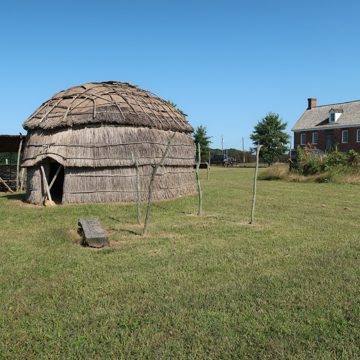Handsell represents the dwellings of affluent settlers to Dorchester County, located near the confluence of the Nanticoke River and Chicone Creek and the site of an early Native American village. The well-crafted brick facade of this Georgian manor house has been preserved, although the house was rebuilt in a more vernacular tradition following a fire likely set by raiding British privateers c. 1780. The early house was a full two stories with a shallow front pavilion, set on a raised basement that housed the kitchen and had a central-passage, double-pile plan. It was built for English-born gentleman-merchant and member of the Maryland Assembly Henry Steele and his wife, Ann Billings Steele, daughter of an Oxford merchant. Handsell was left in ruins, with the facade and sections of the side walls remaining, until purchased by John Shehee and rebuilt in 1837, a date ascertained through dendrochronology. The rebuilt house is only a single-pile, with the repaired section marked by common-bond brickwork. By c. 1850 the house was tenanted, and c. 1930 it once again was abandoned.
The Handsell tract was patented in 1665 to Thomas Taylor, a military officer and Indian trader licensed to maintain the interests of its Nanticoke and Chicone tribe inhabitants. Although recognized by the colonial government in 1720, their claim was later revoked, the tribes were relocated, and the property was sold. The area, however, is still referred to as Indiantown. To honor their early occupation near the waterways that bear their names, an authentic replica of a native longhouse was constructed in 2014 by the Nanticoke Historic Preservation Commission, also undertaking Handsell’s restoration.


